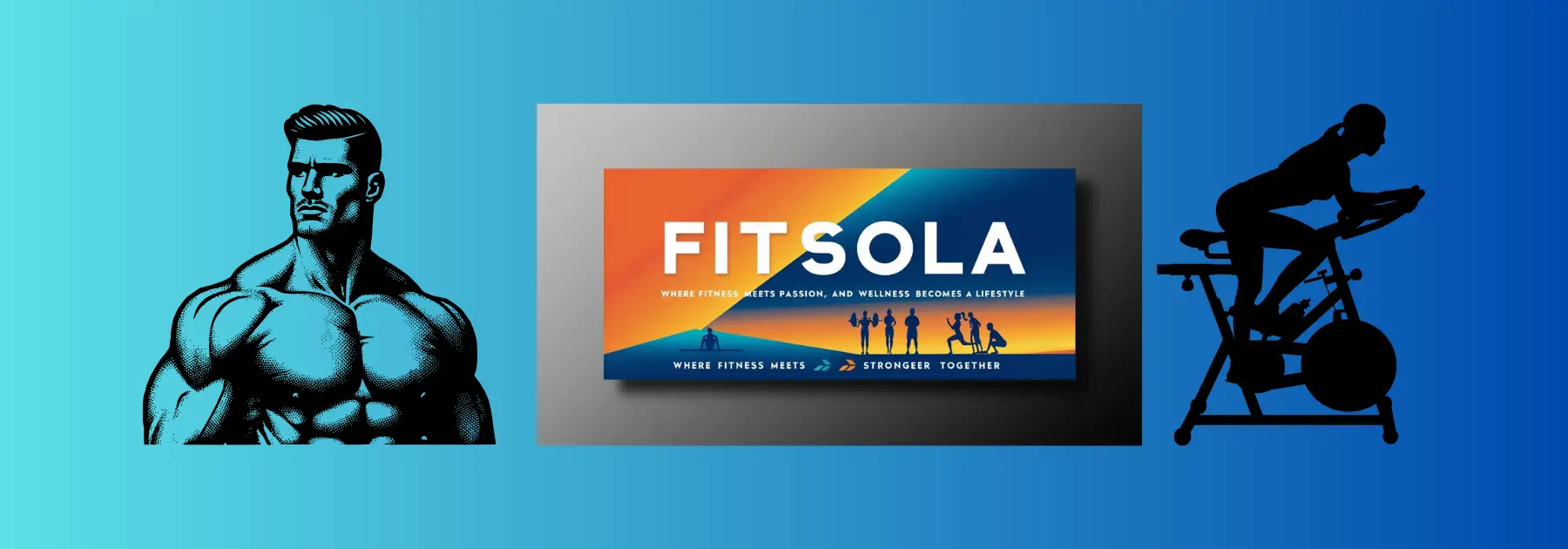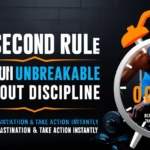Let’s be brutally honest for a second. How many times have you enthusiastically scribbled down a new Workout Plan, only to find it gathering digital dust (or actual dust on a notebook) within a few weeks? Maybe you powered through for a month, but the promised results – more energy, visible muscle, that dress fitting better – just didn’t materialize. Frustration sets in. Motivation plummets. Sound familiar?
You’re not alone. The fitness landscape is littered with abandoned plans and unmet goals. The problem isn’t usually a lack of effort; it’s often that the plan itself was flawed from the start. Generic templates, unrealistic expectations, and a fundamental mismatch between the plan and you are common culprits.
Designing a workout plan that actually works – one that delivers sustainable results, fits your life, and keeps you engaged – isn’t about copying the latest influencer routine or maxing out on day one. It’s a thoughtful, personalized process. It’s engineering success, brick by brick. And that’s exactly what we’re going to build together.
Step 1: Laying the Foundation – Know Your “Why” and Your Starting Point
You wouldn’t build a house without blueprints and a solid foundation. Your workout plan is no different. Skipping this step is like setting off on a road trip without a destination or a map.
- Define Your CORE Goal (Be Ruthlessly Specific):
- Vague: “I want to get fit.” “I want to lose weight.” “I want to tone up.”
- Specific & Actionable: “I want to lose 15 pounds of body fat in 4 months.” “I want to run a 5K in under 30 minutes by September.” “I want to be able to do 10 consecutive pull-ups by the end of the year.” “I want to reduce my lower back pain and feel stronger doing daily activities.”
- Why Specificity Matters: Your goal dictates everything – the exercises you choose, the intensity, the volume, the rest periods, and how you measure progress. Fat loss requires a different approach than marathon training, which differs vastly from powerlifting.
- Assess Your REALISTIC Starting Point (Honesty is Key):
- Fitness Level: Are you a complete beginner? Coming back after a long hiatus? Consistently active but plateaued? Be realistic about your current strength, endurance, and mobility. Trying to jump into an advanced plan as a beginner is a recipe for injury and burnout.
- Time Commitment: How many days can you realistically commit to structured workouts? 3 days? 4 days? 6 days? Be honest about your schedule, energy levels, and other obligations. A plan requiring 6 days a week is doomed if you can only manage 3 consistently.
- Equipment & Environment: Do you have access to a fully-equipped gym? Prefer home workouts? Only have dumbbells and a resistance band? Love the outdoors? Your available resources significantly shape your exercise selection.
- Health & Injuries: Do you have any pre-existing conditions, injuries, or movement limitations? Consulting a doctor or physical therapist before starting a new program is non-negotiable if you have concerns. Ignoring this can derail your progress completely.
- Preferences: Do you hate running with a passion? Love dancing? Find yoga blissful? Get energized by heavy weights? Enjoyment is CRUCIAL for adherence. A plan forcing you to do activities you despise will fail.
Step 2: Understanding the Pillars – The Principles of Effective Training
Your plan needs structure guided by proven scientific principles. These aren’t just jargon; they’re the engine that drives adaptation and results.
- Progressive Overload (The Non-Negotiable): This is the golden rule. To get stronger, faster, leaner, or more enduring, you must gradually increase the demands on your body over time. How?
- Increase Weight: Lift heavier dumbbells/barbells.
- Increase Reps: Do more repetitions with the same weight.
- Increase Sets: Perform more groups of repetitions.
- Increase Frequency: Train a muscle group or skill more often (within reason).
- Increase Time Under Tension: Slow down the lifting/lowering phases of exercises.
- Decrease Rest Periods: Shorten the breaks between sets.
- Improve Form/Technique: Move more efficiently, often allowing for increased load later.
- Key Point: Progress should be gradual and sustainable. Don’t try to max out every single workout.
- Specificity (SAID Principle – Specific Adaptation to Imposed Demands): Your body adapts specifically to the type of stress you place on it. Want to run faster? You need to run (and do running-specific drills). Want bigger arms? You need to challenge your arm muscles directly with appropriate exercises. Your goal dictates your training focus.
- Individuality: What works wonders for your friend, your favorite athlete, or an Instagram influencer might be ineffective or even harmful for you. Your genetics, recovery capacity, lifestyle stress, sleep quality, nutrition, and injury history are unique. Your plan must respect that.
- Adaptation & Recovery: Results don’t happen during the workout; they happen during the rest and recovery period afterward. This is when your muscles repair and grow stronger, your energy systems replenish, and your nervous system recovers. Overtraining (not allowing enough recovery) is a major cause of plateaus and failure. Schedule rest days and prioritize sleep and nutrition.
- Reversibility (Use It or Lose It): Fitness gains are reversible. If you stop training, you will gradually lose the adaptations you’ve built. Consistency is paramount for long-term success.
Step 3: Blueprinting Your Plan – Structuring for Success

Now we get into the practical design. Think of this as creating the weekly schedule and daily lesson plans.
- Choose Your Training Split (How You Divide Muscle Groups/Days): This depends heavily on your frequency (days/week) and goals.
- Full Body (2-4 days/week): Great for beginners, general fitness, fat loss, or time-crunched individuals. Hits all major muscle groups each session. Allows for good frequency per muscle group with fewer weekly sessions.
- Upper/Lower (3-4 days/week): Splits upper body muscles (chest, back, shoulders, arms) and lower body muscles (quads, hamstrings, glutes, calves) on separate days. A versatile and popular split.
- Push/Pull/Legs (PPL) (3-6 days/week): “Push” days focus on muscles involved in pushing motions (Chest, Shoulders, Triceps). “Pull” days focus on pulling motions (Back, Biceps). “Legs” is self-explanatory. Allows for higher volume per muscle group.
- Body Part Split (4-6 days/week): Typically dedicates each day to one or two major muscle groups (e.g., Chest/Triceps, Back/Biceps, Legs, Shoulders). Common in bodybuilding. Requires higher weekly frequency.
- Beginner Tip: Start simple! Full Body or Upper/Lower 2-3 times per week is often ideal.
- Exercise Selection (The Building Blocks): Choose movements that align with your goals, equipment, and capabilities.
- Prioritize Compound Movements: These exercises work multiple muscle groups and joints simultaneously (e.g., Squats, Deadlifts, Bench Press, Rows, Overhead Press, Pull-ups, Lunges). They deliver the most bang for your buck in terms of muscle recruitment, calorie burn, and functional strength.
- Supplement with Isolation Movements: These target a single muscle group (e.g., Bicep Curls, Triceps Extensions, Leg Extensions, Calf Raises). Use them to address weaknesses, imbalances, or aesthetic goals after your compound lifts.
- Include Functional & Core Work: Don’t neglect movements that mimic real-life activities or build core stability (planks, bird-dog, Pallof press, carries).
- Cardiovascular Exercise: Choose based on goal and preference. Steady-state (jogging, cycling, swimming) is great for endurance and base fitness. High-Intensity Interval Training (HIIT – short bursts of max effort followed by rest) is efficient for fat loss and cardiovascular capacity. Integrate it logically: e.g., separate from strength sessions, or after weights, or on separate days.
- Determine Sets, Reps, and Intensity (The Dosage): This is where progressive overload and specificity come alive.
- Rep Ranges & Goals:
- Strength (1-6 reps): High weight, low reps. Focuses on neural adaptations and maximal force production.
- Hypertrophy (Muscle Growth) (6-12 reps): Moderate weight/moderate reps. The classic “bodybuilding” range.
- Muscular Endurance (12+ reps): Lower weight, high reps. Improves a muscle’s ability to perform repeated contractions.
- General Fitness/Fat Loss (Mix it up!): Often a blend, e.g., compound lifts in the 6-10 rep range for strength/hypertrophy, accessories in the 10-15 rep range, cardio as needed.
- Number of Sets: Typically 3-5 sets per exercise is effective for most goals. Beginners can start with 2-3 sets.
- Intensity (% of 1 Rep Max – 1RM): This refers to how heavy the weight is relative to your maximum capability for one rep. Strength work uses high intensity (85-100% 1RM), hypertrophy uses moderate (67-85% 1RM), endurance uses lower (<67% 1RM). As a beginner, focus on learning form with moderate weight before obsessing over 1RM.
- Rest Periods: Shorter rests (30-60 sec) promote metabolic stress (good for hypertrophy/endurance). Longer rests (2-5 min) allow for better recovery of the ATP-PC system, crucial for strength and power output on heavy sets.
- Rep Ranges & Goals:
- Program Progression (The Roadmap): This is where most generic plans fall flat. You MUST have a plan for how you will implement progressive overload over the coming weeks and months. Common methods:
- Linear Progression: The simplest. Add a small amount of weight (e.g., 2.5-5 lbs) or one rep to the same exercise each week.
- Double Progression: Work within a rep range (e.g., 8-12 reps). Start with a weight you can do for 3 sets of 8. Once you can do 3 sets of 12 with that weight, increase the weight next session and drop back to 3 sets of 8.
- Wave Loading: Fluctuate intensity/volume within a week or across weeks (e.g., Week 1: Moderate weight/higher reps, Week 2: Heavier weight/moderate reps, Week 3: Very heavy weight/lower reps, Week 4: Deload).
- Block Periodization: Dividing your training into distinct blocks (e.g., 4 weeks hypertrophy focus, 4 weeks strength focus, 4 weeks power/peaking focus) each with specific goals and loading parameters.
- Beginner/General Fitness Tip: Linear or double progression is often sufficient and manageable for the first 3-6 months.
- Schedule Deloads (Preventative Maintenance): Planned periods of reduced volume and/or intensity (e.g., every 4-8 weeks). This isn’t quitting; it’s strategic recovery to prevent burnout, reduce injury risk, and allow your body to fully absorb the training stress and come back stronger. Think of it as a pit stop.
Step 4: Bringing It to Life – Implementation and The Real-World Element
The most scientifically perfect plan is useless if you don’t do it, or if it makes you miserable. This is where planning is key.
- Start Conservatively (Especially Beginners): It’s tempting to go all out. Resist! Start with lighter weights than you think, fewer sets, and shorter durations. Master form first. Build the habit of consistency. You have plenty of time to add intensity later. Rushing leads to injury and burnout.
- Master Technique (Non-Negotiable): Proper form prevents injury and ensures you’re actually targeting the right muscles effectively. Use mirrors, record yourself, hire a qualified trainer for a session or two if possible, watch reputable tutorials. Never sacrifice form for heavier weight.
- Listen to Your Body (Intelligent Training vs. Laziness):
- Good Pain: Muscle soreness (DOMS – Delayed Onset Muscle Soreness) 24-72 hours after a new or intense workout is normal.
- Bad Pain: Sharp, shooting, joint-related pain, or pain that doesn’t subside with rest is a warning sign. STOP the exercise causing it. Modify or seek professional advice.
- Fatigue vs. Exhaustion: Feeling tired is normal. Feeling utterly drained, irritable, constantly sore, or experiencing disrupted sleep might signal overreaching or overtraining. Take an extra rest day or deload.
- Embrace Flexibility (Life Happens): Your plan is a guide, not a prison sentence. If you miss a workout, don’t panic and try to “make it up” by cramming. Just pick up with the next scheduled session. If you’re feeling unusually fatigued, swap a heavy day for a light mobility session or extra rest. If you despise an exercise, find a suitable alternative. Consistency over the long haul matters infinitely more than perfect adherence every single week.
- Track Your Progress (Fuel for Motivation): This is crucial for applying progressive overload and staying motivated.
- What to Track: Exercises, weights used, sets, reps, rest times, how the set felt (easy/moderate/challenging), how you felt overall (energy levels), measurements (photos, tape measure, body weight – but don’t obsess daily!), performance markers (run time, push-up max, etc.).
- How to Track: A simple notebook, a notes app, or dedicated fitness apps (like Hevy, Strong, Jefit) work great. Review your logs regularly to see your progress and plan your next increases.
- Nutrition & Hydration (The Unsung Heroes): You cannot out-train a poor diet. Fueling your body adequately with protein for repair, carbohydrates for energy, healthy fats for hormones, and micronutrients for overall function is essential for recovery and results. Hydration impacts performance and recovery profoundly. This deserves its own deep dive, but don’t neglect it!
- Patience & Process (The Long Game): Meaningful, sustainable results take time. Forget “30-day transformations.” Focus on the process – showing up, executing your plan, making small consistent improvements. Celebrate non-scale victories: feeling stronger, having more energy, clothes fitting better, nailing a new personal best, feeling more confident. Trust the process.
Step 5: Troubleshooting & Evolution (Keeping It Working)
No plan is perfect forever. Your body adapts, life changes, goals shift.
- Identify Plateaus: If you haven’t seen progress in weight, reps, measurements, or performance for 3-4 weeks while consistently applying progressive overload, you’ve likely hit a plateau.
- Strategies to Break Plateaus:
- Reassess Your Goal: Is it still relevant? Do you need to adjust it?
- Check Recovery: Are you sleeping enough? Stressed? Undereating?
- Modify Variables: Change your rep ranges, increase volume slightly (an extra set), decrease rest periods, introduce new exercises (or variations), try a different periodization scheme (like wave loading), ensure you’re actually pushing yourself enough in workouts.
- Deload: A planned week of reduced effort often works wonders to overcome a stall.
- Re-Evaluate Regularly (Every 4-12 Weeks): Life changes. Goals evolve. What worked initially might not work forever. Schedule time to review your progress, assess how the plan feels, and make adjustments. Maybe you need more challenge, maybe you need to shift focus, maybe life demands a more time-efficient routine for a while.
Conclusion: Your Plan, Your Journey, Your Results
Designing a workout plan that actually works isn’t about finding a magic template. It’s about embracing a process rooted in self-awareness, scientific principles, intelligent structure, and compassionate consistency. It requires honesty about where you are, clarity about where you want to go, and the patience to build the bridge between them, brick by brick, workout by workout.
Forget the quick fixes and the noise. Invest the time upfront to build your blueprint. Prioritize form, listen to your body, track your progress, fuel yourself well, and embrace the journey – the frustrations and the triumphs alike. Celebrate the small wins, adapt when needed, and above all, be kind to yourself.
Because the workout plan that “actually works” isn’t just about sets and reps; it’s the one that becomes a sustainable, rewarding part of your life, empowering you to become a stronger, healthier, and more resilient version of yourself, one deliberate step at a time. Now, grab your metaphorical blueprint and start building. Your results are waiting.
Ready to put this into action? Download my FREE customizable workout plan template below to start building YOUR effective blueprint today!
[Insert Call to Action/Link to Template Here]
What was the biggest hurdle you’ve faced with workout plans in the past? Share your experiences in the comments below!




[…] The Anti-Lazy Blueprint: Strategies to Get Moving for Good […]
[…] Why “Walk at Home” is More Than Just Pacing […]